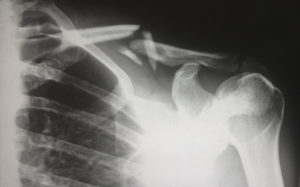If you’ve been charged with a crime but have doubts about a key piece of evidence, you may be able to get it thrown out at trial. Your guilt or innocence isn’t the issue here, but rather the admissibility of police evidence. An experienced defense attorney knows how to suppress evidence that is collected illegally or which is otherwise inadmissible. But in order to have evidence thrown out, no matter how illegitimate you think it is, you must first file a motion to suppress evidence with the court. A judge will then make a ruling on the admissibility of the evidence.
Evidence used in a criminal case must be both “relevant” and “competent,” meaning it needs to be directly related to the charges and collected/handled in accordance with the law. Knowing how to suppress evidence in a legal proceeding is an important step in any criminal defense.
The Exclusionary Rule
The exclusionary rule prevents the government from using most evidence gathered illegally. It usually comes into play when evidence is obtained in violation of a suspect’s Fourth Amendment rights against unlawful search and seizure. For example, a murder weapon can’t be used at trial if police illegally searched a defendant’s home to recover it. An officer generally must obtain a valid search warrant and follow proper procedures for a piece of evidence to be admissible at trial. The rule may also be triggered by police violations of the Fifth or Sixth Amendment.
Additionally, the “fruit of the poisonous tree” doctrine holds that otherwise admissible evidence, testimony, or even confessions may be excluded from trial if they resulted from an illegal search or some other constitutional violation. For example, a suspect is arrested and tells police where to find the gun used to commit the crime. But if he wasn’t read his Miranda Rights or police ignored his pleas to speak to his lawyer, the gun may later be deemed inadmissible in court.
Reasons a Court May Suppress Evidence
Your attorney should know how to suppress evidence against you if your constitutional rights have been violated. Here are some common reasons a court may suppress evidence:
- Unlawful Search and Seizure: The Fourth Amendment protection against unlawful search and seizure applies to many situations involving police officers, including routine traffic stops and visits to your home. With some important exceptions, police must have a valid search warrant, a valid arrest warrant, or probable cause that a crime has been committed in order to search for and gather evidence.
- Failure to Read Miranda Rights: The law requires that officers read “Miranda rights” to a suspect in custody prior to their questioning or interrogation. These rights inform the suspect that they have the right to remain silent, that anything they say may be used against them in court, and that they have the right to an attorney. If the suspect hasn’t been “read their rights,” confessions or statements made after the arrest may not be admissible.
- Chain of Custody Errors: The “chain of custody” refers to the documentation and proper care of evidence, from its seizure by police to its presentation at trial. If the chain of custody is broken, the evidence may lack credibility and could be deemed inadmissible. For example, a woman involved in a car crash has her blood drawn (with a warrant) to see if she was intoxicated while driving. But the police mislabel or mix up the blood evidence with others at the lab. This evidence may be suppressed because the chain of custody was improper.
Exceptions to the Exclusionary Rule
There are certain instances where evidence may still be admissible even when police overstep the boundaries or fail to follow protocol, including the following exceptions:
- Inevitable Discovery: If the judge rules that an illegally seized piece of evidence eventually would have been discovered through legal means, it may be admitted. For instance, an officer illegally enters a suspect’s home and finds a cocaine lab. The occupant already was a suspect and police were about to request a search warrant for his home. If a judge concludes that a normal police investigation would have likely uncovered that same evidence without the illegal entry, the evidence may be admissible.
- Good Faith: If an officer has every reason to believe he is acting within the limits of the law, then some procedural errors may be overlooked. For example, police search a suspect’s home based on what they honestly and reasonably believed to be a valid search warrant. Unfortunately, the warrant suffered from a technical legal defect that police were unaware of. Since the police acted in good faith, the evidence derived from the search warrant may not necessarily be excluded in court. If police had known about the defect (or should have known), then the evidence may still be excluded.
- Independent Source: If a source (other than the officer who illegally seized evidence) would have provided that same evidence, a court may rule it admissible. This is similar to the inevitable discovery exception. For example, police illegally search a suspect’s home and find documents showing that she is the mastermind of a large-scale internet scam. But later that day, an informant sends the same documents to the police. The evidence may be admissible, since an independent source provided the same evidence.
* Above is excerpted from FindLaw. For the complete article, click here.








